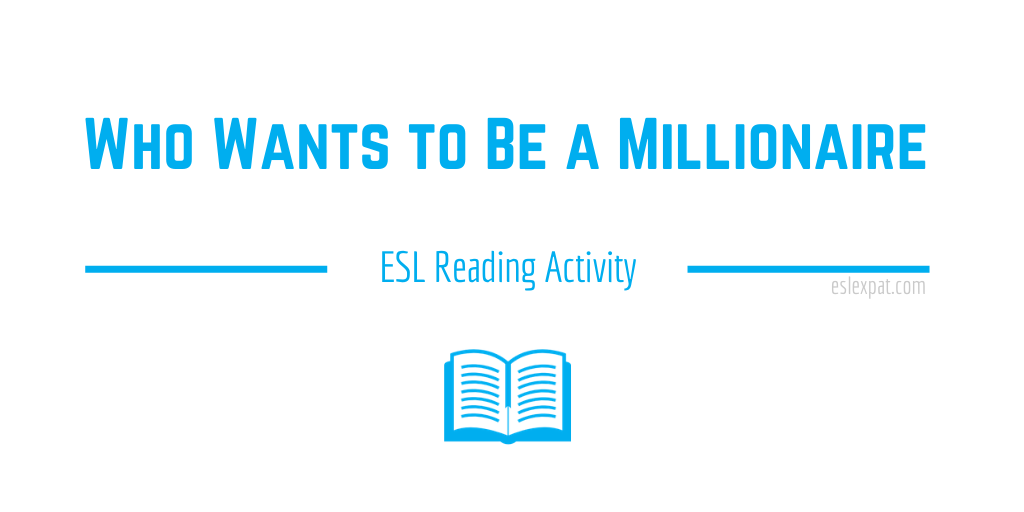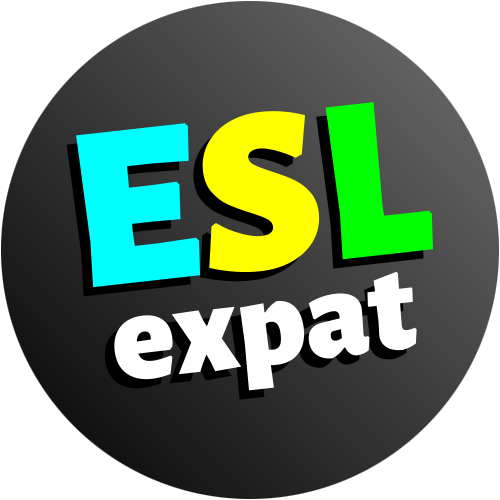|
Download ESL Books + Free PDFs
ESL Vocabulary Flashcards Download free flashcards & PDFs! |
Who Wants to Be a Millionaire is a fun ESL game to play for all ages and most skill levels. The game is great for testing students’ reading comprehension and critical thinking skills.
Student Level: Intermediate, Advanced

Who Wants to Be a Millionaire ESL Activity Preparation:
Find a sample article from a website or use a text from your students’ course book. Prepare three reading comprehension questions that are based on the article. Vary the question types and difficulty. For instance, they could be true-false questions, specific detail questions, or critical thinking questions, etc.
Who Wants to Be a Millionaire ESL Activity Guidelines:
Before showing the class the sample article, you may want to have a brief discussion about the topic to activate background knowledge.
Next, write your first question on the board.
Give the class a minute to find the answer in the text. The first student to give the correct answer scores 100 points. Then, write your second question on the board. Give the class a couple of minutes this time. Reward whoever answers it with 200 points.
Lastly, write your third question on the board. You may want to give the class extra time to think about this one since it is the most challenging. Anyone who can answer the final question correctly gets 300 points.
At this point, the class should understand the general goal of the game.
To start the activity, divide the class into small teams. Each team must create a series of questions based on the text. They should come up with three easy questions, two moderate questions, and one challenging question. When the teams are thinking of questions to ask, have them divide the work amongst their team members. For example, some students could work on the easy questions while others in the group could focus on the more challenging questions.
Give them about 10 minutes to create their question list on paper. Monitor and assist the teams as they read and prepare their lists.
Begin the game once everyone is ready. Teams take turns answering the opposing teams’ questions. Again, points are scored based on the question difficulty level similar to the scores outlined in the teacher’s example.
After the final round of questions, count up the total points and declare the winning team.
Follow-Up ESL Activities:
If you have extra time, you could try reviewing vocabulary from the article. For some ideas, check out vocabulary games like 20 Questions, Mystery Word, and the Board Race game for more active learners.
More ESL Reading Activities for Kids and Adults:
View the reading activities archive.

